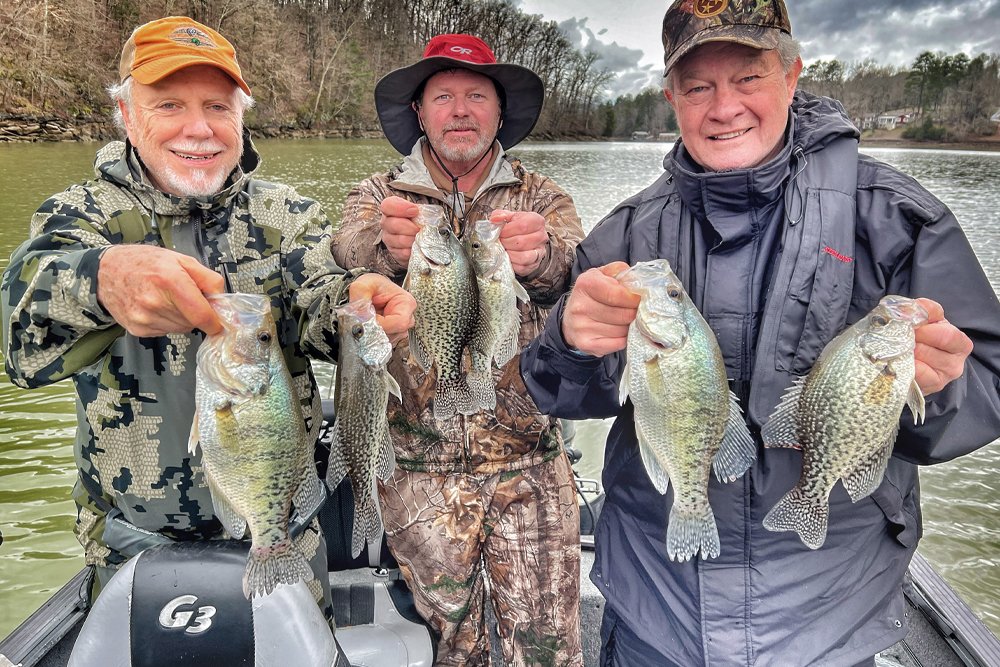Handfuls of crappie, plus lots more in the livewell, are the reason Capt. Richard Simms loves to long-line
troll during the March pre-spawn period. (l-r) Bill Swan, former Tennessee wildlife commissioner,
Bill Swan III and Ed Carter, former Executive Director of the Tennessee Wildlife Resources Agency. (Photo: Capt. Richard Simms)
Crappie Basics: Long-line Time in Tennessee
by Capt. Richard Simms, CrappieNOW Editor
Most crappie anglers wait patiently for the spawn. Some won’t even hit the water until they believe it’s happening and crappie are up in shallow water, five feet or less.
They are missing TONS of fun and lots of great fish filets.
For me the pre-spawn period is the time to go. Beginning in February and usually continuing until early April, at least where I fish on the Tennessee River, pre-spawn crappie are actively feeding and aggressive, stocking up on reserves before the stressful spawning period.
LOOK FOR CRAPPIE HIGHWAYS
My favorite areas are major creeks or embayments along the Tennessee River. Early in the season I’ll begin near the mouth, often trolling in 20 feet of water. That’s where you’ll find schools of baitfish, usually with a wolf pack of crappie following them.
Trolling six rods with 1/16th ounce Road Runner jigheads with Crappie Magnet plastics, I’ll troll 6-pound test line between 0.6 and 0.9 mph. During the pre-spawn crappie aren’t oriented to structure. They are roaming open water in search of bait schools. Troll long enough and you’ll find them, or as my friend Ed McCoy says, “When you’re trolling, it doesn’t matter where you go as long as you keep going.”
As the season progresses into late March or early April, we will typically move farther back on the creeks. As the spawn approaches, we may resort to dragging planer boards through 3-5 feet of water.
IT’S A MARATHON, NOT A SPRINT
Once you find fish, stay in the area. I’ve kept statistics for many years. A good bite means you’ll put five or six legal keepers in the livewell per hour (probably with lots of short crappie or bycatch of yellow bass, stripe or bluegill as well). That equals 30 good keeper crappie in five hours of fishing, a pretty good day in anyone’s book.
But when you hit a GREAT bite, it can look like this:
Admittedly it is not the purist form of fishing. But once you’ve got your pattern down, it’s easy, it’s relaxing, and you will put meat in the freezer.
From Chattanooga, Tenn., in addition to being the CrappieNOW Editor, Capt. Richard Simms is owner of Scenic City Fishing Charters, Inc. He began his outdoor career as a Tennessee game warden later choosing journalism (and guiding) as his chosen profession. Check out his book, “An Outdoor State of Mind.” You can contact him at Richard@ScenicCityFishing.com.


